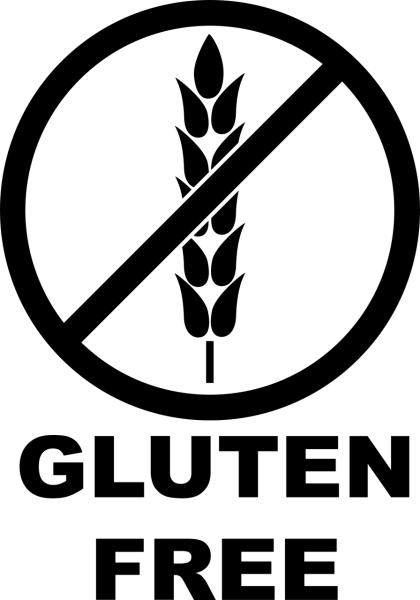Food intolerance is a problem in the digestive system.
 When our bodies fail to digest any specific food, we feel discomfort in our digestive system. This is food intolerance. The symptoms of food intolerance are related to digestion, e.g., nausea, vomiting, stomach pain.
When our bodies fail to digest any specific food, we feel discomfort in our digestive system. This is food intolerance. The symptoms of food intolerance are related to digestion, e.g., nausea, vomiting, stomach pain.
Food intolerance is more common than food allergy. Food intolerances are not as damaging or potentially life-threatening as food allergies.
Food intolerance results in different types of carbohydrate and protein-rich foods being difficult to digest. These may include:
- Lactose Intolerance is the most common food intolerance. To digest dairy products that contain lactose, a sugar, we need an enzyme, lactase. Some people do not produce any lactase, and others produce too little. According to the National Institute of Health (NIH), almost 65% of people have diminished ability to produce lactase hormone after infancy. These individuals can often tolerate yogurt and cheese. Alternative foods are dairy-free products like soy, almond, and coconut milk.
- Fructose Intolerance is another carbohydrate or sugar intolerance. Fructose is found in fruits, vegetables, and different sweet products. Again, the intolerance is due to our body's inability to break down fructose properly. People with this problem need to avoid or reduce fructose intake commonly found in beverages such as soda, fruit juice, and foods, including apples, grapes, watermelon, peas, and zucchini. Fructose is used in many food items, so susceptible individuals should check food ingredients carefully.
- FODMAPs is a third group of “indigestible” carbohydrates, those that can ferment. They are found in milk, cheese, honey, apple, artichokes, bread, beans, and lentils. Avoiding FODMAPS or a diet low in FODMAPS is helpful. Low-FODMAP foods include meats, fish, eggs, bananas, berries, carrots, eggplants, and grains like corn and rice.
- Gluten Intolerance: Gluten is a protein found in wheat, barley, rye, etc. It is frequently confused with Celiac disease, which is an autoimmune disease. Gluten intolerance refers to an inability to easily digest gluten, while in Celiac disease, gluten activates our immune system to attack our digestive tract. The gluten intolerant may have to reduce wheat-containing products like bread, pasta, cereal types of food. Alternatives to gluten-containing foods are quinoa, oats, buckwheat, almond flour, brown rice. Many processed foods, like soups and salad dressing, may contain a trace amount of gluten, so reading labels can be helpful once again.
- Intolerance may also be due to food additives like sulfites in wine or monosodium glutamate – despite a widespread belief, “Chinese-restaurant syndrome” has never been proven to exist.
Food intolerance is managed once the “offending” food is identified; a food diary is often useful in tracking which foods are of concern. In some cases, like lactose intolerance, you can take an enzyme supplement to improve your ability to digest dairy products and those FODMAPs. In other instances, you can substitute other foods, like gluten-free bread or cakes.
A study in Nutrients found that multi-strain probiotics take over eight weeks or more seemed to help reduce the symptoms of irritable bowel syndrome (IBS). IBS symptoms overlap those of food intolerance, and alterations in the gut microbiome may aid digestion and reduce abdominal pain and bloating.
Food allergy is a problem in the immune system.
When our bodies, by mistake, think food is harmful to us and create antibodies against it to protect the body, that is a food allergy. Unlike our inability to digest carbohydrates, protein-rich food creates allergies. In the case of food allergies, when the food is eaten for the first time, the immune system thinks it is harmful and produces an antibody against it. When the immune system is once again exposed to that food, it mounts a defense creating various symptoms, including rashes, itchiness, breathing problems, heart rate changes, and high blood pressure.
Common food allergies include milk, eggs, peanuts, tree nuts, shellfish, fish, soy, wheat.
 The rise of allergies can be blamed on early-life antibiotic use, less exposure to microbes, genes and environmental factors, and dietary patterns.
The rise of allergies can be blamed on early-life antibiotic use, less exposure to microbes, genes and environmental factors, and dietary patterns.
The rise in peanut allergies has resulted in a changed approach. The current NIH guidelines suggest introducing peanut-containing food to the children during the time of starting solid food. The test results can determine if peanuts should be introduced or not. However, high-risk infants should undergo a test before offering that food. High risk infants are those who have severe eczema and/or a known egg allergy.
Food allergies can result in life-threatening breathing problems, and those genuinely allergic to a food should always carry emergency medication, an “Epi-pen.” Food allergies are most easily managed by avoiding the food, but with some foods' ubiquity, that is often harder than we think. That is why it is essential for these individuals to carefully read food labels and why you will see foods noting that they were prepared in the same plant that processes peanuts.




